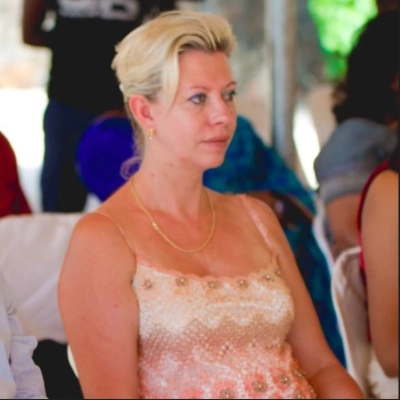6 Successful Sustainable Design Practices in Architecture
Sustainable architecture practices are transforming the industry with innovative approaches that balance environmental responsibility and design excellence, according to leading experts. From reclaimed materials to AI-enhanced efficiency, these six proven methods demonstrate how eco-conscious decisions create exceptional spaces while reducing environmental impact. The fusion of financial intelligence, energy-saving techniques, and technological advances is establishing new standards for responsible architecture across the profession.
Reclaimed Materials Create Unique Sustainable Spaces
One sustainable design practice I've successfully implemented was using reclaimed and locally sourced materials in a commercial interior renovation. Instead of defaulting to new finishes, I worked with local suppliers to repurpose old barn wood for wall panels and used recycled metal for fixtures. Not only did this drastically reduce the project's carbon footprint, but it also gave the space a unique character that resonated with the client's brand values.
The impact went beyond aesthetics—the client saved nearly 20% on material costs and earned a local sustainability certification, which they now proudly feature in their marketing. The process also inspired other teams in the firm to rethink how sourcing choices affect both design and the environment.
My advice for others is to start small: question every material choice. Sustainability doesn't have to be complex—it's about creativity, collaboration, and finding beauty in what already exists.

TCO Quoting Makes Sustainability Financially Smart
It is truly valuable when you find a way to make your design decisions environmentally responsible and financially smart for the client. My approach to "sustainable design" is all about longevity. The "radical approach" was a simple, human one.
The process I had to completely reimagine was how I quoted light fixtures. I realized that a good tradesman solves a problem and makes a business run smoother by minimizing long-term waste and energy consumption. The challenge was convincing clients to choose expensive, high-quality components over cheap ones.
The one sustainable design practice I implemented was TCO (Total Cost of Ownership) Quoting for Lighting. We now exclusively quote high-end, commercial-grade LED fixtures that last five times longer and use less energy. The "impact" was phenomenal: it drastically reduced material waste (fewer failed components going to landfill) and secured massive long-term energy savings for the client.
This focus on longevity has transformed my reputation. My advice for others is to treat sustainability as a financial guarantee. A job done right is a job you don't have to go back to. Prove that the quality, efficient component is the smartest investment. That's the most effective way to "incorporate sustainability" and build a business that will last.

Mandatory Attic Ventilation Reduces Energy Consumption
Focusing on good building practices is the most sustainable thing a roofer can do. The one simple practice we successfully implemented in every project is mandatory, high-flow attic ventilation to combat the massive heat we get in Texas.
The problem is that the attic is the hottest part of the house, and if it can't breathe, the heat bakes the shingles from the inside out and destroys the air conditioner. We stopped offering cheap, simple vents and mandated a superior ridge vent system on all full roof replacements. The "design" is simple: the attic needs to breathe to prevent the shingles from being cooked.
The impact of this practice was immediately felt by the client's wallet. By significantly lowering the attic temperature, we reduced the home's cooling load. This not only extended the life of the new roof for years, which reduces future waste, but it also immediately lowered the client's energy bills. The result is measurable, tangible proof of value.
The key lesson is that the most effective "sustainability" is the one that saves the client money directly. My advice is to stop worrying about fancy, expensive labels. Focus on simple, structural changes—like superior ventilation—that guarantee longevity and energy efficiency. Good building practice is always the best form of being green.
Preserved Plants Offer Maintenance-Free Natural Beauty
Sustainable Design Through Preserved Plants
One sustainable design practice that I have successfully implemented in interior projects is the use of preserved plants in interiors and installations.
Unlike fresh flowers or live plants, preserved botanicals require no water, soil, or continuous maintenance.
They are real plants that have undergone an eco-friendly preservation process, allowing them to retain their natural beauty and texture for months or even years.
By reducing the need for irrigation, pesticides, and frequent replacement of fresh plants, preserved plants have helped lower both resource consumption and waste generation.
In commercial spaces such as offices, hotels and restaurants, preserved green walls and arrangements create a lasting biophilic effect, and enhance a feeling of natural well-being without the hidden environmental costs of maintaining live plants indoors.
Clients also appreciate that preserved plants are a long-term investment.
They don't wilt or require ongoing replacement, which also reduces the carbon footprint linked to repeated sourcing and transportation.
My advice to others looking to incorporate sustainability into their designs is to consider the full lifecycle of the materials you choose.
Sustainability is about sourcing responsibly and minimising waste.
Preserved plants bridge the gap between aesthetics and responsibility by offering natural beauty with a much lower environmental impact.
You can put preserved arrangements in communal areas or as accent pieces in private homes.
For larger projects, use preserved green walls, ceiling installations and even preserved trees.
These pieces continue to bring aesthetical and environmental value over time.
Screen Printed Projects Cut Carbon Emissions
I've made a habit of screen printing each of my projects on t-shirts. It feels good to see them completed, and they are always a conversation starter to meet interesting strangers. Each upcycled t-shirt saves roughly 7,2 CO2e kg from the atmosphere, which adds up to a lot since screen printing is so practical.
Spec-Driven AI Development Enhances Project Efficiency
Practice: Spec-driven development with AI agents (we use Cursor).
For a given feature, we start with a specification that covers decisions, functional and non-functional requirements, initial implementation constraints, and an implementation plan. We then split it into a lightweight "documentation graph" in the form of Cursor rules. Some basic information and pointers to other parts are under "Always apply," while specifics are placed under either "Apply intelligently" or file name patterns. This allows agents to traverse the lightweight graph and load only the parts necessary for a given task. We also keep this documentation graph up to date: after each completed slice, we update the rules to capture complex logic, common patterns, and data models (e.g., pagination logic for all APIs, request context handling, data wrangling, and edge cases). Making the spec "live" is essential to keep the spec-driven approach efficient over time - it provides stable, reproducible results.
Effect: In our projects, this converted vibe-coding into shipping: fewer iterations and clarifications, and no need to correct each step of the agent. It also improved onboarding and knowledge transfer processes - the documentation is already live.





